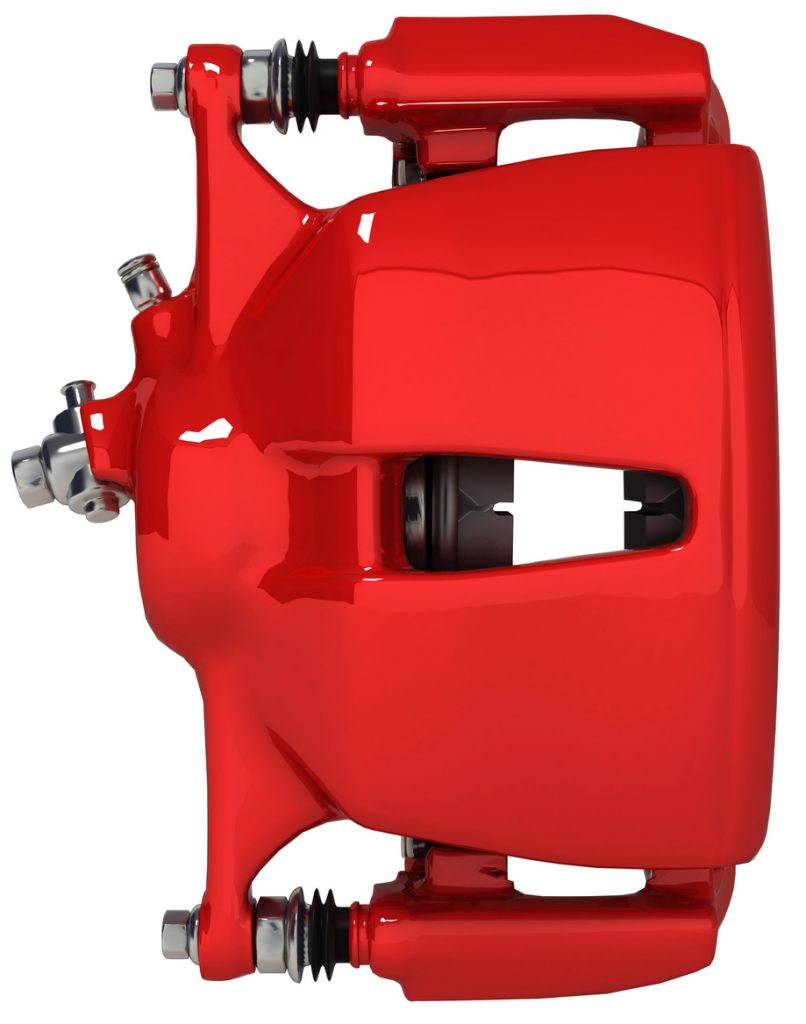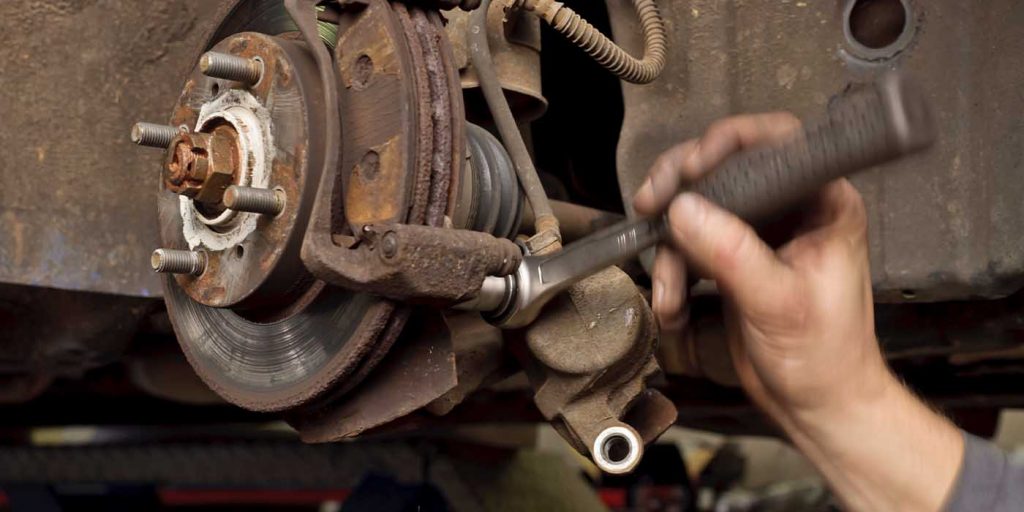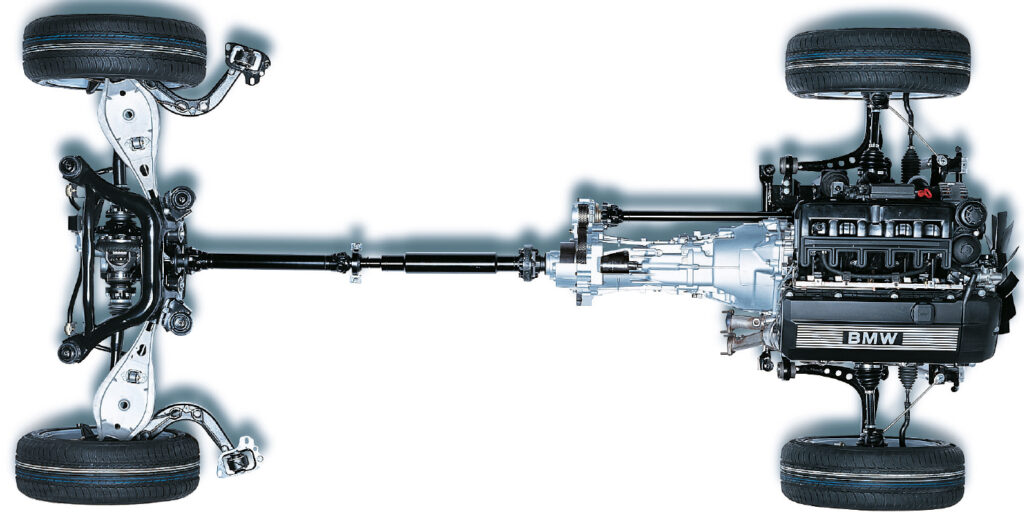Abutment Clips
Abutment clips reside on the caliper bracket lands on most vehicles. They create a uniform surface for the pads to make contact with. Some abutment clips include fingers that hold the pad in place. These are consumable components in a brake system, not only because of rust and wear, but because the anti-rattle features can fatigue over time.
There are better options than the hardware found in the box with the brake pads. These hardware sets can include clips with noise dampening coatings.
Caliper Guide Pins
If the caliper is not free to move, the culprit might be bent or binding mounting pins. Even if guide pins are not damaged, swollen or hardened guide seals or lack of lubrication may cause the caliper to bind, resulting uneven pad wear. Always inspect all mounting surfaces and hardware for corrosion, wear or misalignment. Replace all mounting hardware and install a replacement caliper using the proper caliper lubricant.

Caliper Guide Pin Boots
Most floating brake calipers use a rubber or plastic insulator or shim around the mounting bolts of the caliper. This sleeve of soft material loses resiliency over its lifetime. This is hastened by the high-temperature environment of the brakes.
As materials wear, instead of being round they can get flattened by the torque from the brakes into an oval shape that can cause excessive caliper movement. This can cause noise like rattles and thumps even if the brakes are not applied.
Always inspect and, if necessary, replace any dust boots or grommets that protect caliper bolts or slides. If the soft parts look OK, clean out all the old lubricant and replace with new lubricant.
Unlike steel, soft parts like rubber are sensitive to chemicals. Choosing the right lubricant for these parts is critical to ensuring the integrity of the part. If the caliper boots fail to make a seal with the caliper bracket and bolt, water can be sucked into the cavity as the bracket contracts and cools.
Caliper Brackets
Caliper bracket corrosion can occur when the caliper is exposed to road de-icing salt. Corrosion on the lands and slides should be removed with a wire brush or wheel. If the corrosion is not removed, it can cause the pads to bind even if a stainless-steel abutment clip is on top of it. Also, clean the sealing surfaces around the caliper guide pin. If the surface is not smooth, the boot can’t make a good seal.
New caliper brackets are available separately and some remanufacturers include them as part of the caliper assembly. Just make sure you return the old bracket to get full credit for the core. Also, some suppliers offer just the caliper bracket for specific applications.
Pad Separators
More and more OEMs are including springs that are designed to push the pad away from the rotor after the piston retracts. These clips can increase fuel economy while eliminating brake noise.
The clips are designed to push the pad away from the rotor. This can keep the brakes cooler, reduce noise and extend the life of the pad. These springs/clips can be difficult to install, but they always should be reinstalled.
Some aftermarket brake companies are offering a solution that can be used on the caliper. The clips fit between the pads and rotor and push the pads away from the rotor. These clips have more spring, while not preventing the movement of the caliper’s piston. They also have the potential to reduce pulsation complaints.
Article courtesy Brake & Front End.














